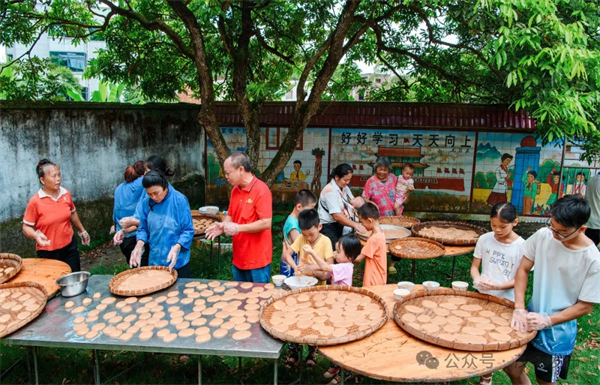Maoming's intangible cultural heritage cuisine: glutinous rice cakes
- (guangdong.chinadaily.com.cn/maoming)
- Updated: 2024-08-01

Villagers from Maoming gather to make glutinous rice cakes. [Photo/WeChat account: maofabu]
In order to further inherit the traditional craft of making glutinous rice cakes, on July 24, villagers from Tongzibao village, Hejiang town, Huazhou city, Maoming, organized a gathering.
Hejiang glutinous rice cakes serve as a traditional local snack in Huazhou, which is popular in southern China and has a long history. Every year’s 28th day of the 10th lunar month was an early harvest festival. The villagers, living in the vicinity of Tongzibao village in Hejiang town, would use the newly harvested glutinous rice to make glutinous rice cakes, inviting family and friends to celebrate the harvest.
Villagers collect various grasses and mulberry stalks from the mountains and burn them into ashes on the spot. The ashes, once collected, are placed on a paper-lined sieve in precise proportions and then carefully filtered with hot water. This process allows for the complete infusion of the original grasses' fragrance.
The glutinous rice is soaked in the prepared ash water for about six hours and then steamed for six hours over a fire. Once steamed, it is poured into a wooden mortar while hot, pounded, and mashed to refine the large grains of glutinous rice into a smooth paste. Finally, the paste is shaped into small round mooncake-like glutinous rice cakes.
In 2023, the Hejiang glutinous rice cake was listed in Maoming's intangible cultural heritage list.


